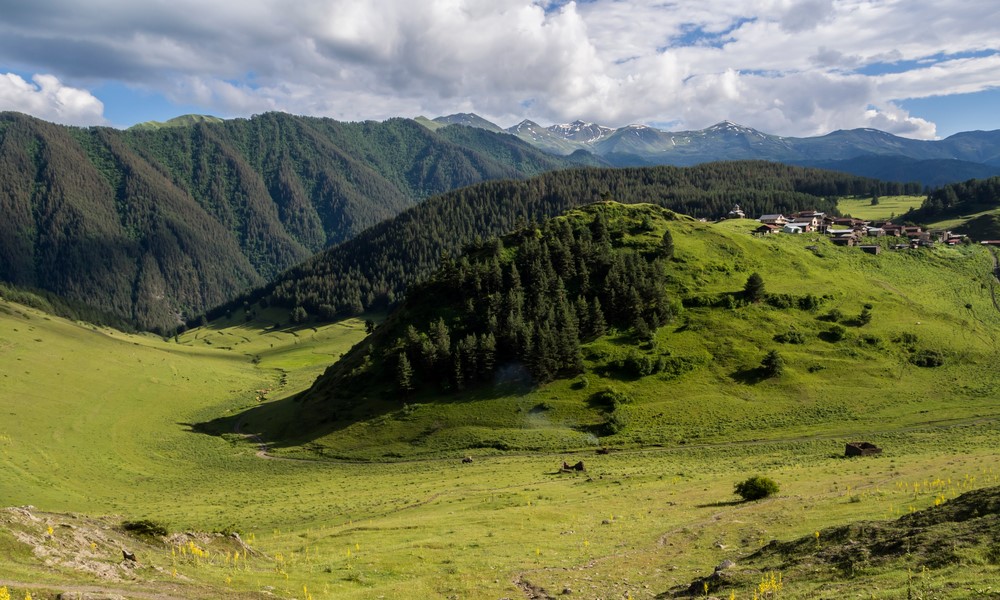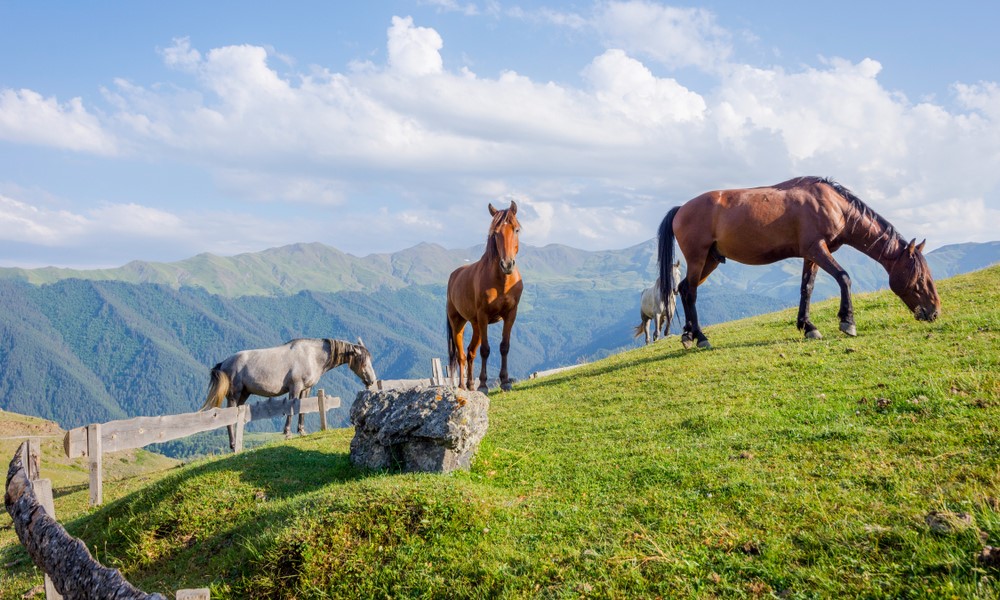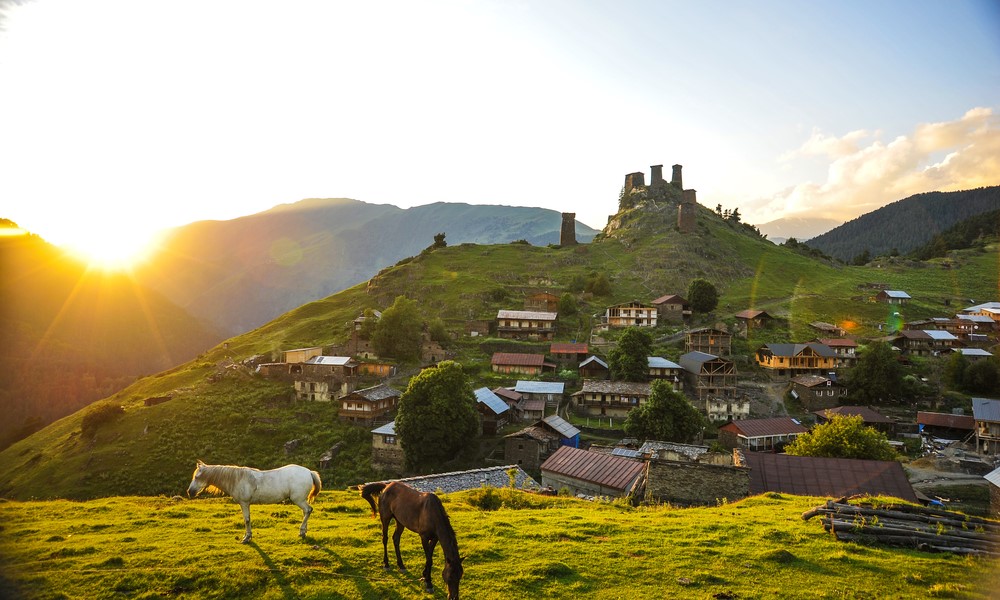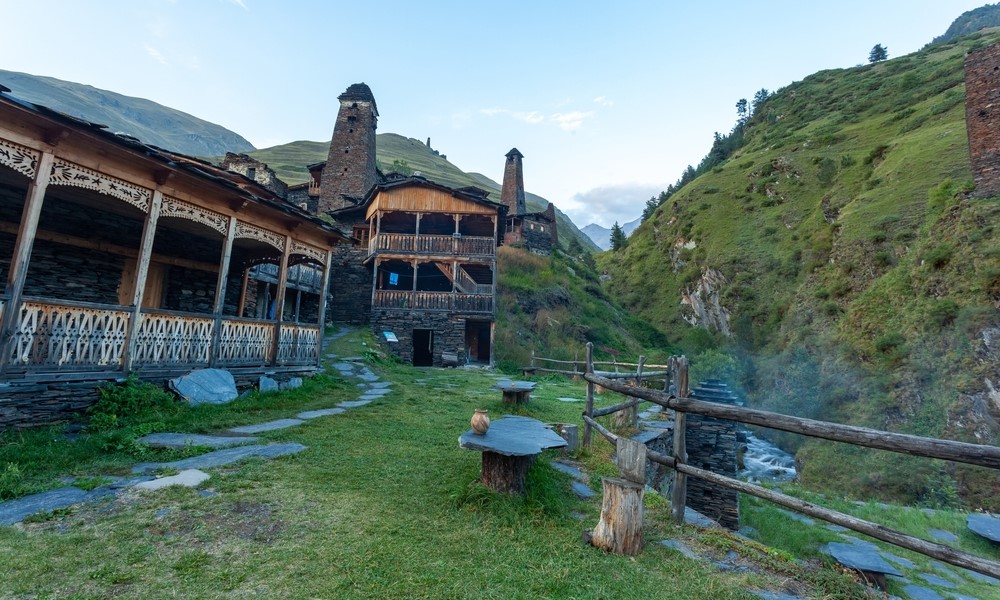Tushetia is one of the most distant and inaccessible regions of Georgia. It is located in the north-east of the country and cut off from other regions with high mountains and passes, so the ancient fortresses, traditions and the special primacy that tourists seek are well preserved there. The region is located at a height of one and a half to four and a half thousand meters. Four communities live on the territory, which administratively relate to the Akhmetsk municipality, which is part of the edge of Kakheti.
The road to Tushetia because of snow closes for the winter and opens only in the spring, and in the cold season only a few families remain there. Therefore, now is the time to have time to “jump into the last car” to see the region in the fall, when there are almost no tourists there.
How to get

Now there is no direct air traffic between Russia and Georgia, we recommend that you fly with transfers in Istanbul or Yerevan. The cost of tickets with departure at the end of October starts from 24,600 rubles* in one direction. For entry, Russians will only need a passport, without a visa in the country you can be 365 days. PCR tests and vaccination certificates will not be needed.
The road to Tushetia runs through the picturesque serpentine high in the mountains. It will not work to get by public transport. The most popular route is along the road highway from Telvi through Psveli, the Abano pass at an altitude of about 3000 meters and further along the mountains to Omalo. The path from Tbilisi will take 6-7 hours. To get without incident, you will need all -wheel drive, otherwise there is a big chance of getting stuck at the very beginning of the rise to the pass. It is better not to take risks and hire a driver with a suitable car back in Tbilisi. It is important that the driver knew well the local roads and has time not only to deliver you to the destination, but also to wait for the end of the trip and bring it back. Since the region is very far away, the driver does not make sense to go to the city, so be ready to pay for the whole time spent with you.
Where to stop
The largest village of Tushetia is Omalo, they shot the feature film of George Danelia “Mimino”. From there it is convenient to make sorties to different locations of the region. Keep in mind that there are no large network hotels with a high level of service in Omalo, but there are several cozy guest houses to choose from:
Guest House Gordila (rating 9 out of 10) – from 2,800 rubles* per night in a double room.
Guest House Old Omalo (rating 8.2 out of 10) – from 2,300 rubles* per night in a double room.
What to see

In fact, the entire territory of Tushetia is a national park where people continue to lead their life and live far from civilization. Since 2003, three zones have been included in the protected territories: a reserve, a national park and a landscape reserve. Here, unique plants as black birch, buttercups of the Caucasian, Tushinsky wrestler grow here. And in the sky you can often observe how the vultures (rashes) are majestically soar, or, as they are also called, lambs, and mountain eagles.
In the old days, Tushinov’s dwelling were tall narrow towers: they kept cattle on the ground floor, they themselves lived on the second, and on the third they kept many stones in case of attack (the towers served as a defensive structure). Now the towers are a place of attraction of tourists from around the world. And the carcasses still build their homes without a cement mortar, skillfully folding the flat stones of the shale to each other so that there are no gaps.
The locals adopted Christianity, but remained faithful to paganism: on special holidays, for example, at the Atnigenobu, they sacrifice animals. It is also a festival of folk art: Aludy (cooking beer) and chitanoba (races on Tushino horses) are an integral part of the holiday.
The road to Tushetia is 70 km of mountain serpentine from the village of Pshavel in Kakheti to the village of Omalo at the top. Tourists usually stop at a weather station at an altitude of 2,826 meters, from where a chic view of the mountain ranges opens. If you are lucky and the weather will be good, curly clouds will swim underfoot in the valley, and you will definitely want to take a lot.
Omalo

The village is conditionally divided into the upper and lower settlements. In the first, views and attractions are more interesting, the second is cheaper than housing and tastier than Khinkali. From the local cuisine, we recommend that you try khachapuri on a potato cake, it differs from the usual one thanks to Tushino sheep cheese (GUDA), which has increased fat content. The cheese is withstanding for 20 days in a sheep wound and it turns out surprisingly tasty, despite the specific smell.
Saturating, go to explore historical places. On the hills, the stones of stone rise – this is the medieval fortress of Keselo, a mandatory to visit the route point. Here you will want to take a walk among the ancient structures, enjoy the blow of a fresh mountain wind, listen to how the mountain river is noisy at the bottom of the gorge – Tushetskaya Alazani.
Shenako
This is a unique village, since there is the only active Orthodox temple in Tushetia. The Church of St. George was built in the 19th century and represents a free cross-doll building from shale and lime. On the western wall of the gate there was a square bell tower, but now only the foundation remained from it.
Shenako may first of all remind the tourist from Russia about the film “Mimino” – it is from there that the main character. Some scenes were shot here, and part in Omalo. Both villages are at approximately the same height, but they are separated by a picturesque mountain gorge.
Dartlo

One of the most photogenic villages of Tushetia: neat houses built like a ruler, narrow streets and carved terraces, white clouds of sheep in meadows, river noise and thin lines of waterfalls in the mountains.
In the center of the village, next to the church, there are cinema ruins of ancient Christian temples. A plate is located right in front of them, which indicates that women have access to the shrine. In order not to offend local residents, we recommend that you honor traditions and be attentive to warning signs. Moreover, photographs of relics taken from the outside are the most spectacular. Near the small semicircle there are 12 stone chairs, on which the elders of the village once sat.
If you are ready for a steep rise, you can do a small tracking on the hill where there are defensive towers. One of the most unforgettable impressions will leave a ghost city, where it is easy to transfer to the past, being among the towers composed of the same stones as the mountains around.
Bochoran
The village of Bochorna is located in the Gometsari gorge, from where the views of the sand -colored mountains stretch. In the fall, there are almost no local residents here, because of the cold, they usually leave to winter on the “large land”. But if you are lucky, you will be able to get acquainted with the only permanent resident of Bochorana – the doctor Irakli Khvedaaguridze. Thanks to him, in 2014, the village conquered its status from Ushguli (Svanitia) and became the highest population in Europe – 2345 meters above sea level. It is very easy to feel here on the edge of the world. Not lonely, but free.
This region itself is a huge natural attraction where you can find literally everything: full -flowing rivers with trout, waterfalls falling with silver lines from the edge of the mountains, smooth ridges covered with thick hats of forests and a cold crust of glaciers. The grazing herds of sheep and horses, good -natured residents and delicious local cuisine – all this will give inspiration and rest from the usual life in the metropolis.
*Prices are valid at the time of publication
To find a suitable hotel, use the Onetwotrip hotel site.

